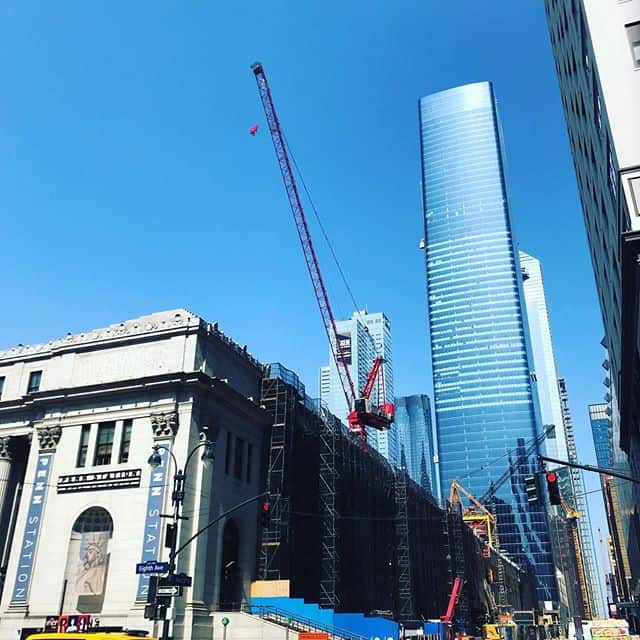By most every measure, next year’s Expo 2020 is big. The six-month event will take place on a 1,000-acre site straddling Dubai and Abu Dhabi, and is expected to add $40 billion to the local economy.
Some 460,000 truck moves, coordinated by UPS, will bring materials to build exhibit halls, along with the world’s largest solar power project. So the only thing small about Expo 2020 might be Voyage Control.
The London-based firm, with just 20 employees, created the scheduling and appointment system used at Expo 2020. Thanks in part to Expo 2020, Voyage Control’s web-based software platform is on track to schedule its two millionth truck since its founding in 2009.
With a firm toehold in construction and events scheduling, founder and Chief Executive Officer James Swanston is setting his sights on helping U.S. marine terminals better plan for truck traffic.
Voyage Control got its start handling the truck traffic for London’s Olympia exhibition center. Olympia could have up to 100,000 truck moves per year, depending on event schedules.
“You had these mass concentrations of trucks marshalling in a tightly packed city,” Swanston said. The hall’s developers approached Swanston to build “a scheduling platform for getting people in and out.”
From events, Swanston said he saw an opportunity to bring better scheduling to the commercial construction industry.
Despite a nearly $400 billion annual spend on materials, the U.S. commercial construction industry is underserved by current technology providers, resulting in massive productivity issues, Swanston said.
Material like concrete can spoil if delivered at the wrong time or to the wrong gate. Swanston estimates that 10 percent of materials end up being reordered because of waste, adding up to 4 percent extra cost to a project.
“Most job sites have someone on a telephone working out where their trucks are, unlike manufacturing, unlike retail,” Swanston said. “They manage most things off of a white board, spreadsheet or sticky notes.”
Globally, Swanston estimates about 100 sites use Voyage Control currently. Its web-based software platform integrates with construction planning software such as Procore and Autodesk. In the U.S., Swanston says 11 of the top 25 construction companies use Voyage Control for truck scheduling.
Voyage Control’s software is being used to schedule truck traffic at the Moynihan Train Hall going up next to New York’s Penn Station and at the planned five-year renovation of Boston’s Logan Airport. Another Boston project, the 60-story Millennium Tower, used Voyage Control to schedule elevators to bring materials up as floors were built.

“There’s just this lack of visibility where their trucks are,” Swanston said. “The idea is giving them the ability to help manage the process and manage the cranes and hoists. If you can make the supply of material more efficient, It can make construction process.
The inertia of manual scheduling for truck visits is the biggest hurdle to adopting an appointment system, Swanston said. But security and vetting requirements for vendors at sensitive sites like airports or the “Build America” requirements for materials used in the Moynihan train station mean monitoring additional details in any site visit.
“The status quo is manual management of logistics, but we are starting to get to the tipping point,” Swanston said.
Few places are as congested with truck traffic as the Port of Los Angeles. After reading about the 2014-2015 congestion issues at the port, Swanston saw an opening for Voyage Control’s platform. Its first customer, Yusen Terminals International (YTI), saw truck turn times fall by nearly one-third to 55 minutes after the Voyage Control platform was put in place.
The system allows shippers to better prepare for their incoming freight, Swanston said. YTI offers appointments up to one week ahead of container’s being available, compared to the one- to two-day appointment window more commonly available at marine terminals.
Appointments are also helping with the problem of unpredictable and last-minute shut-outs for returning empty containers to terminals, due to space constraints or changing instructions from the ocean carriers.
Swanston said YTI is rolling out guarantees on taking empty returns as long as an appointment is booked.
“That’s an insane problem where the truck is driving to the Los Angeles port with an empty container and told it cannot drop it off,” Swanston said. “It’s breaking the process.”
YTI and Fenix Marine Services, the second-largest marine terminal in Los Angeles and another Voyage Control customer, are also looking into offering a common appointment system, meaning drivers will only have to access one portal to schedule an appointment.
The idea of the common appointment portal remains a goal for the port as it has tried to get shippers and truckers to use GE Transportation’s Port Optimizer to little avail. Marine terminals rely on siloed appointment systems built into terminal operating systems such as Advent Intermodal. Voyage Control’s marine terminal clients use the Navis terminal operating system, which allows integration with Voyage Control.
Swanston envisions future iterations of Voyage Control providing “dynamic” appointment systems based on a truck’s position relative to a port. But a system like that would require a “cultural change,” Swanston said, as it would upend the role of dispatchers at trucking companies.
Nonetheless, the company is looking ahead at the next levels of truck visibility. Voyage Control is working on a truck visibility offering that would allow construction managers to see where trucks are in transit.
“We want to get people off the whiteboard and onto the motherboard,” Swanston said.











